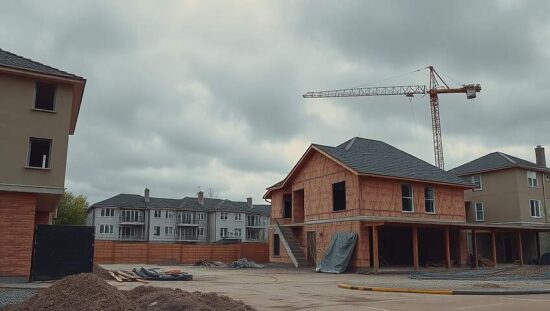Germany’s construction sector is facing persistent inflationary pressures, according to the Federal Statistical Office (Destatis), with new builds of conventionally constructed residential buildings experiencing a 3.1% price increase in August 2025 compared to the same period last year. While a slight deceleration from the 3.2% increase recorded in May 2025, the ongoing rise is fueling concerns about affordability and potentially hindering government initiatives aimed at addressing the nation’s housing shortage.
The data reveals a complex picture of escalating costs across various construction phases. Raw construction work on residential buildings saw a marked 2.2% increase year-on-year, heavily influenced by rising expenses in concrete and bricklaying – two key components of residential build projects. Notably, roofing work experienced a significant surge of 4.4%, alongside increases of 3.1% for earthmoving and 4.7% for timber and carpentry.
Further upward pressure stems from finishing works, which saw a 3.6% price increase compared to August 2024. The rising cost of heating systems and central water heaters, including a notable 4.4% jump, reflects the government’s push for greater energy efficiency and the adoption of technologies like heat pumps. Meanwhile, prices for electrical, security and information technology systems climbed by 5.1%, while costs for heat-insulating composite systems rose by 3.3%.
The sustained price inflation is particularly concerning given the ongoing political debate surrounding affordable housing. While the government has implemented various programs designed to stimulate construction and ease the housing crisis, the rising costs are effectively neutralizing some of those efforts. Critics argue that without more aggressive intervention – perhaps revisiting regulations impacting material sourcing or implementing more direct cost controls – the ambition of expanding housing availability will remain out of reach.
The data also indicates that the situation isn’s limited to residential builds. New construction prices for office buildings and commercial buildings rose by a comparable 3.3%, pointing to a broader inflationary trend within the construction industry. While road construction prices have seen a comparatively smaller increase of 3.5% (the lowest since May 2021), the overall outlook suggests that inflationary pressure remains a significant challenge to Germany’s construction sector and, more broadly, to the nation’s economic stability. The long-term impact on investment and public infrastructure projects remains to be seen.





